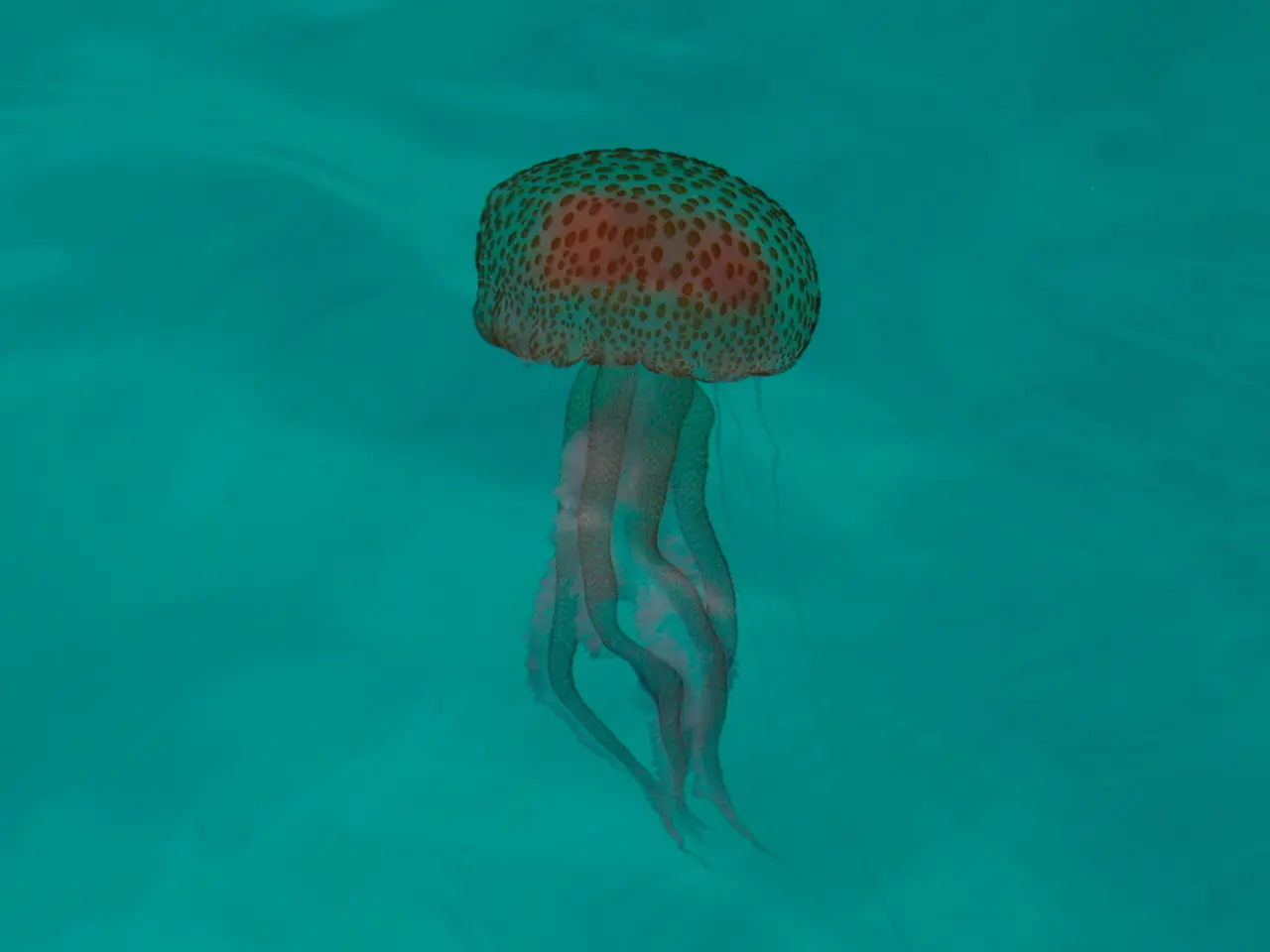Jellyfish Deepstaria Discovered with Unanticipated Roommate Inside Its Bell Chamber
In the vast and mysterious depths of the ocean, a unique symbiotic relationship has been discovered between the Deepstaria jellyfish and the Anuropus bathypelagicus isopod. This symbiosis, rare and intriguing, offers insights into the complexities of life in the deep sea.
Overview
The Deepstaria jellyfish, known for its expansive, thin, and bag-like bell, is often transparent, making it a captivating sight in the dark abyss. On the other hand, the Anuropus bathypelagicus isopod, a deep-sea dweller, has been observed living inside the bell of the Deepstaria jellyfish.
The Nature of the Relationship
The isopods reside within the jellyfish’s bell, using it as a form of shelter and protection from predators in the deep ocean’s vast and dark habitat. This relationship seems to benefit both parties, with the isopod finding safety and transportation, and the jellyfish potentially gaining cleaning and maintenance services.
Benefits to Anuropus bathypelagicus
The jellyfish’s bell offers a safe refuge, reducing the risk of predation. The isopods may also feed on the jellyfish’s mucus, trapped particles, or leftover prey inside the bell. Moreover, the bell provides a relatively stable environment in an otherwise sparse deep-sea habitat.
Benefits to Deepstaria Jellyfish
The isopods may help keep the jellyfish free from parasites and other small organisms that could damage its delicate tissues. Movements by the isopods could also help circulate water inside the bell, potentially enhancing oxygen flow or removing debris.
The Symbiotic Relationship
This symbiosis appears to be likely mutualistic or commensal, where both species gain benefits. The jellyfish potentially gains cleaning and maintenance of its bell, while the isopod finds shelter, protection, and food resources.
However, direct observations are rare, and these interpretations are based on analogous symbiotic relationships between gelatinous zooplankton and crustaceans documented in the deep sea. The jellyfish's companion, a bright-orange isopod, has been observed living within its bell, and it's possible that the isopod feeds on prey captured by the jellyfish.
The Deepstaria jellyfish, first identified off California's coast in 1966, remains exceedingly rare. It has been found in various locations, including the Gulf of Mexico, the Caribbean, the Central Atlantic Ocean, and the Southern Ocean near Antarctica. The jellyfish uses its membranous bell to engulf small crustaceans, fish, and even other jellyfish as prey.
The discovery of this symbiotic relationship between the Deepstaria jellyfish and the Anuropus bathypelagicus isopod has sparked scientific curiosity about the roles each species plays in this unusual partnership and the potential implications for other deep-sea symbioses.
Research into this unique symbiotic relationship between the Deepstaria jellyfish and Anuropus bathypelagicus isopod, found in the deep sea, could provide valuable insights into natural history and the complexities of life in such environments. This newly discovered relationship, with potential mutualistic or commensal benefits for both species, may also shed light on health-and-wellness aspects, such as the role of symbiosis in the survival and adaptability of deep-sea creatures.




